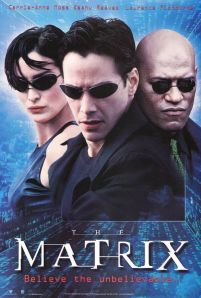
Some years ago, during contemplation, I was given a glimpse of the Sahasrara, the one-thousand petaled lotus. It appeared to me as a white mosaic and inside was a triangle, the shape of which was continuously being outlined in black. My teacher is always telling us that we might see colors and/or geometric shapes during contemplations, but I recognized that this glimpse was important for me to check out. I had guessed I’d seen the crown centre, but I wasn’t sure why a triangle was there. I knew the triangle had esoteric significance, but I just didn’t know enough at the time to put it all together. After some research, I found the closest representation of what I experienced in the book, “The Sacred Power” by Swami Kripananda (the picture above is not the one from the book, but similar. I saw only the color ‘white’). My teacher confirmed what I saw and when I asked him what the significance of the triangle was he pointed to a tapestry of a yantra (designs helpful for contemplation or meditation on the Absolute) he has hanging on a wall in the sitting room. The triangle as ‘trinity” is probably most familiar to Christians, but the trinity actually appears in many religions/cultures which predate Christianity. India, Greece, Babylonia, Egypt, among others, all had their own triad representations of the Divine. In the asana practice, “The Flow Series,” Ganga White of the White Lotus Foundation comments on trikonasana (triangle pose): “The triangle is the building block of geometry. A foundation pose that represents the three principles of knowledge, will, and action.” Swami Kripananda in the book “The Sacred Power,” describes the significance of the triangle located in the Sahasrara this way:(*Swami Kripananda, The Sacred Power: A Seeker’s Guide to Kundalini, (SYDA Foundation, 1195), 114)
“The sixteen Sanskrit vowels beginning with ‘a’ form the first line of the triangle, the first sixteen consonants beginning with ‘ka’ form the second line, and the sixteen consonants beginning with ‘tha’ form the third line.”
“…The first line is the line of fire…is associated with Brahma, creation… The second line is the line of the moon, connected with Vishnu, preservation…The third line is the line of the sun…is associated with Rudra, destruction..”
“The a-ka-tha triangle is the abode of Shakti and also of Paramashiva…”*

In other words, the triangle contained within the crown centre is the seat of the Supreme Consciousness. You see triangles forming yantras (literally meaning “instrument” or “machine”) representing the creative forces of the universe through the Divine aspects mentioned. You may also see lotus petals surrounding the yantra or maybe circles connecting the geometric patterns.
The lotus is the flower used as the metaphor of spiritual unfoldment. It is rooted in muddy, murky waters until the lotus flower rises above the muck and blossoms, just as we transcend the murky ignorance of the ego to realize our true Self. A lotus sprouts from Vishnu’s navel when the cycle of creation starts. Each of the chakras are described as having a certain number of lotus petals. So how does the flower and the triangle connect?

Nassim Haramein is a cosmologist trying to connect some of the dots in the mysteries of the universe. His research has led him to explore the so called “flower of life.” This is a symbol, which appears in many spiritual traditions and ancient cultures and is thought to be the ‘structure’ from which the universe originates. It incorporates ‘the torus,’ which, for ease and clarity, can be described as a flow of energy. But here’s an interesting connection: if you take the triangles represented in a yantra (you need 64 of them), make each of them into the 3d structure of the tetrahedron, add circles (spheres), representing the torus energy pattern, surrounding the tetrahedrons and then drop away the tetrahedra, you’ll be left, amazingly, with a pattern that fits the “flower of life” symbol. The video below illustrates this.
Maybe I’m trying too hard to make these connections, probably it’s a major oversimplification; at the very least it is fascinating to ponder. Hope you find it fascinating as well…







